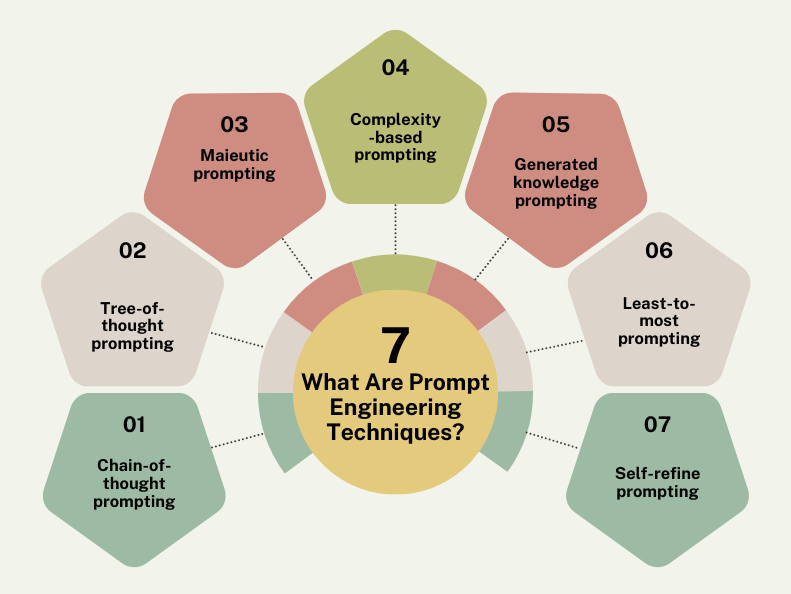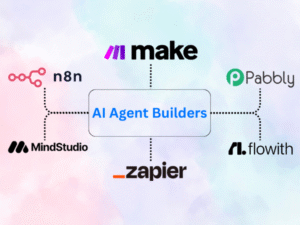The primary purpose of prompt engineering in AI systems is to design and refine input prompts that guide the AI to generate accurate, relevant, and context-specific responses, enhancing performance and usability across various tasks.
In the world of artificial intelligence (AI), prompt engineering plays a vital role in ensuring that AI models produce accurate, relevant, and meaningful responses. AI Upsurge is at the forefront of helping businesses and developers harness the power of AI through precise and strategic prompt engineering. But what is the purpose of prompt engineering in AI systems, and why is it critical for AI’s effectiveness?
What is Prompt Engineering?
The Question what is the purpose of prompt engineering in ai systems the detailed answer is here you get read till last – Prompt engineering refers to the structured approach of creating, optimizing, and experimenting with prompts (instructions or inputs) given to AI models. AI models, especially those used for generating text, images, or other content, depend heavily on the prompt they receive to output accurate information.
By adjusting the phrasing, structure, or complexity of the prompt, developers can significantly influence the quality of responses generated by the AI. This iterative process helps the AI system better understand context, nuance, and the specific task at hand, enabling it to deliver more useful results.
MCQ
What is the primary purpose of prompt engineering in AI systems?
A) To control hardware processes
B) To refine and guide AI responses for accuracy and relevance
C) To eliminate human intervention in AI systems
D) To develop completely autonomous AI systems
Answer: B) To refine and guide AI responses for accuracy and relevance
Further explain In detail read till last…

Why is Prompt Engineering Important?
Prompt engineering is essential because it bridges the gap between human intent and AI execution. Here’s why it matters:
Greater Developer Control
One of the main advantages of prompt engineering in AI systems is that it gives developers precise control over the behavior of the model. By tweaking the prompt, developers can steer the AI’s responses toward desired outcomes, minimizing irrelevant or inaccurate information. This level of control is particularly useful in highly specialized or technical fields.
Read This Blog also – Explanation Based Learning in AI
Improved User Experience
Well-crafted prompts can significantly enhance the user’s interaction with AI systems. By making the AI more responsive and accurate, prompt engineering can create smoother, more intuitive user experiences. Whether for customer support, content generation, or even problem-solving tasks, prompt engineering ensures that AI systems meet user needs efficiently.
Increased Flexibility
AI systems are increasingly used for a variety of applications—from creative content generation to technical problem-solving. With effective prompt engineering, these systems become adaptable and flexible, able to cater to different types of tasks without needing separate models. This adaptability makes AI systems more versatile and cost-effective.
What Are Some Prompt Engineering Use Cases?
Prompt engineering can be applied in many scenarios to unlock the full potential of AI. Below are a few key use cases:
Subject Matter Expertise
AI can be guided by expert-level prompts to simulate deep knowledge in particular fields, such as medicine, law, or engineering. This makes AI a powerful tool for answering complex, domain-specific questions with the right guidance.
Critical Thinking
AI systems can be prompted to engage in critical thinking processes, helping to analyze situations, compare multiple data points, or evaluate different arguments. Prompt engineering in AI systems allows the model to focus on logical reasoning, boosting the quality of decision-making.
Creativity
AI can be directed to create innovative solutions or generate unique content. Whether it’s writing a compelling story, designing an art piece, or brainstorming business ideas, prompt engineering helps guide the AI in creative pursuits.

What Are Prompt Engineering Techniques?
There are several techniques that answer of what is the purpose of prompt engineering in ai systems used in prompt engineering to optimize AI’s responses:
Chain-of-thought prompting:
Encourages the AI to explain the reasoning process step-by-step, leading to more coherent and thoughtful responses.
Tree-of-thought prompting:
Guides the AI to consider different pathways or options before selecting the best one.
Maieutic prompting:
Helps the AI ask clarifying questions, ensuring it gathers more relevant information for better accuracy
Complexity-based prompting:
Adjusts the level of complexity in the prompt based on the nature of the task.
Generated knowledge prompting:
Uses previously generated knowledge to inform subsequent responses.
Least-to-most prompting:
Starts with simpler prompts and gradually increases complexity as the AI provides more context.
Self-refine prompting:
Involves the AI refining its own responses iteratively for higher quality.
Directional-stimulus prompting: Guides the AI toward specific objectives or focuses based on user goals.
- Explaination Based Learning In AI
- Main Goal of using context in a prompt
- How AI is Revolutionizing Digital Marketing 2024
- Building AI-Powered Chatbots Without Programming
- King AI Image Generator
- Advantages of Artificial Intelligence Images
- Why is Controlling the Output of Generative AI Systems Important
- How Has Generative AI Affected Security
- DID AI the #1 choice for AI-Generated
- Advantages and Disadvantages of Supervised Learning
- Google Cloud Supported Languages
- Innovative Project Ideas For Students

How Can We Access AWS Easily?
Accessing AWS (Amazon Web Services) is simple and user-friendly, whether you’re a beginner or an experienced developer. AWS offers a variety of ways to get started:
- AWS Management Console: A web-based interface that allows you to manage and monitor your AWS services with ease.
- AWS CLI (Command Line Interface): For developers and administrators who prefer to manage services through commands.
- AWS SDKs: Enable you to integrate AWS services into your applications with ease.
- AWS CloudShell: A browser-based shell that provides a command-line interface without needing to install any software.
The benefits of AWS are vast, including:
- Scalability: Easily scale resources up or down based on your needs.
- Cost-Efficiency: Pay only for the resources you use, making it budget-friendly.
- Security: AWS offers robust security features to protect your data.
- Global Reach: With data centers around the world, AWS provides low-latency access and high reliability.
- Innovative Services: Access to advanced technologies such as AI, machine learning, and big data tools.
Conslusion
In conclusion, prompt engineering plays a crucial role in enhancing AI systems by guiding them to deliver accurate, relevant, and context-aware responses. It gives developers more control, improves user experience, and unlocks AI’s full potential across various tasks, making it an essential technique for optimizing modern AI solutions.
FAQ
Prompt engineering is the process of crafting and refining input prompts to guide AI systems in generating accurate and relevant responses. It involves structuring instructions in a way that aligns with the AI’s capabilities and desired output.
Prompt engineering is essential because it helps control the AI’s behavior, ensuring it provides more accurate, context-aware, and meaningful results. It also improves the user experience by fine-tuning AI responses.
Prompt engineering is used in tasks like generating creative content, solving complex problems, offering subject matter expertise, and enhancing decision-making in various industries.
Techniques include chain-of-thought prompting, tree-of-thought prompting, self-refine prompting, and complexity-based prompting, all aimed at improving the AI’s ability to understand and generate better responses.
By carefully designing prompts, developers can guide AI models to think more critically, creatively, and logically, improving the relevance and quality of the output.
Yes, prompt engineering can be applied to a wide range of AI models, especially generative models like GPT, helping optimize their performance for specific tasks.
I’m a passionate AI enthusiast and the founder of AI UPSURGE. With a deep interest in the latest developments in artificial intelligence, I’m dedicated to making AI accessible and understandable for everyone. Through insightful articles, practical guides, and aims to empower readers to harness the power of AI in their daily lives and professional endeavors. When not writing or exploring the latest AI trends.







